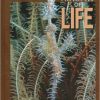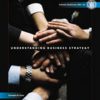Understanding Pharmacology for Health Professionals 5th Edition Turley Test Bank
$35.00 Original price was: $35.00.$26.50Current price is: $26.50.
Understanding Pharmacology for Health Professionals 5th Edition Turley Test Bank
This is completed downloadable of Understanding Pharmacology for Health Professionals 5th Edition Turley Test Bank

Product Details:
- ISBN-10 : 0133911268
- ISBN-13 : 978-0133911268
- Author: Susan M. Turley
Making Sense of Pharmacology
Understanding Pharmacology for Health Professionals provides a well-organized, easy-to-understand introduction to the world of drugs and pharmaceuticals. The Fifth Edition is structured into three broad, clear units that divide the vast subject of pharmacology into an approachable guide for students and experienced health professionals. Today’s most up-to-date drug information is enhanced with beautiful illustrations and photographs that allow students to delve into the visual world of pharmacology while deeply engaging with the text. A comprehensive drug reference glossary as well as a set of thorough appendices supplements the text to further simplify the extensive array of drug information available.
Impeccably organized and enjoyable to read, Understanding Pharmacology for Health Professionals makes a broad and difficult subject matter both graspable and interesting for both students and practicing health professionals.
Table of Content:
Chapter 3 Drug Forms
3.1 Multiple-Choice Questions
1) A solid drug form that contains the active drug (as a dried powder) plus inert ingredients to provide bulk is known as a/an ________.
- A) capsule
- B) ointment
- C) tablet
- D) emulsion
Answer: C
Explanation: A) A capsule comes in two forms, either a gelatin shell or a two-piece, hard shell, not a solid drug form.
- B) An ointment is a semisolid emulsion of oil and water, not a solid drug form
- D) An emulsion is a type of solution, not a solid drug form.
2) What type of tablet has an indented line running across it so that it can be easily broken into equal pieces?
- A) caplet
- B) enteric
- C) scored
- D) troche
Answer: C
Explanation: A) Caplets are coated tablets in the form of an elongated capsule. They do not have an indented line running across them.
- B) An enteric tablet is covered with a special coating that resists stomach acid. An enteric tablet does not have an indented line running across it.
- D) A troche is an elongated tablet that disintegrates to release the drug topically in the mouth. It does not have an indented line running across it.
3) A drug’s trade name will often include abbreviations such as CR, LA, SR, or XL. These abbreviations indicate which type of tablet?
- A) caplets
- B) enteric
- C) slow-release
- D) troche
Answer: C
Explanation: A) These abbreviations do not indicate that the drug is a caplet.
- B) These abbreviations do not indicate that the drug is enteric.
- D) These abbreviations do not indicate that the drug is a troche.
4) Which drug form comes in two different varieties: a soft gelatin shell and a two-piece hard shell?
- A) capsule
- B) cream
- C) ointment
- D) tablet
Answer: A
Explanation: B) A cream is a semisolid emulsion of oil and water. It does not have a shell.
- C) An ointment is a semisolid emulsion of oil and water. It does not have a shell.
- D) A tablet is a solid drug form that contains the active drug. There are several types of tablets, but none are in a shell.
5) The powdered form of a drug can be administered in several different ways. Which of the following is NOT one of the routes of administration used for a powdered drug form?
- A) inhaled into the lungs
- B) inserted into a body cavity
- C) sprayed on skin
- D) sprinkled topically
Answer: B
Explanation: A) Powdered drugs do come in a canister that is activated and the powder is inhaled into the lungs (Serevent Diskus).
- B) This is not a route of administration used for a powdered drug form.
- C) Powdered drugs can be sprayed onto the skin (Tinactin).
- D) Powdered drugs can be sprinkled topically onto the skin (Tinactin).
6) Which of the following is NOT a type of solution?
- A) mousse
- B) elixir
- C) foam
- D) suspension
Answer: D
Explanation: A) A mousse is a type of solution.
- B) An elixir is a type of solution.
- C) A foam is a type of solution.
- D) Suspensions are not a type of solution.
7) Which of the following statements is NOT a description of one of the forms of solutions?
- A) The drug is in fat globules dispersed uniformly throughout a water base.
- B) The drug is in a thickened water base with added sugar and flavoring.
- C) The drug is fine, undissolved particles that settle to the bottom upon standing.
- D) The drug is in a water and alcohol base.
Answer: C
Explanation: A) This describes an emulsion, which is a solution.
- B) This describes a syrup, which is a solution.
- C) This describes a suspension, NOT a solution.
- D) This describes a tincture, which is a solution.
8) Syrups are ________.
- A) sour and more viscous than elixirs
- B) sour and thinner than elixirs
- C) sweeter and more viscous than elixirs
- D) sweeter and thinner than elixirs
Answer: C
Explanation: A) Syrups are not sour.
- B) Syrups are sweet and they are thick.
- D) Syrups are sweet, but they are not thinner than elixirs.
9) Foams are ________.
- A) solutions that contain a drug in a water base
- B) expanded by tiny aerosol bubbles
- C) expelled from a container when they are used
- D) all of the above
Answer: D
Explanation: A) This is true, but it is not the only correct answer.
- B) This is true, but it is not the only correct answer.
- C) This is true, but it is not the only correct answer.
10) Suppositories are used to treat patients with ________.
- A) diarrhea
- B) eye infections
- C) heart disease
- D) vomiting
Answer: D
Explanation: A) Patients with diarrhea are not treated with suppositories.
- B) Eye infections are treated with special topical ophthalmic drops or oral drugs, not suppositories.
- C) Suppositories are not used to treat heart disease.
11) Which of the following is NOT a specialized type of tablet?
- A) caplet
- B) effervescent
- C) lozenge
- D) elixir
Answer: D
Explanation: A) Caplets are a specialized type of tablet.
- B) Effervescent tablets are a specialized type of tablet.
- C) A lozenge is a specialized form of tablet.
12) The word viscous is used to describe a liquid drug. The word viscous means ________.
- A) clear or transparent
- B) thick or nonwatery
- C) powdered
- D) watery or thin
Answer: B
Explanation: A) Viscous does not mean clear or transparent.
- C) Viscous does not mean powdered.
- D) Aqueous, not viscous, means watery or thin.
13) Some over-the-counter drugs used to treat coughs are in the drug form of a/an ________ that coats the mucous membranes.
- A) elixir
- B) ampule
- C) syrup
- D) tincture
Answer: C
Explanation: A) Elixirs are not specifically used to treat coughs.
- B) An ampule is a drug container, not a drug form.
- D) Tinctures are never taken internally.
14) When a tablet is scored across its top surface, that indicates ________.
- A) that it contains a narcotic drug
- B) the mark of a particular drug company
- C) that it contains a double-strength dose
- D) that it can be broken into two or more doses
Answer: D
Explanation: A) Narcotic drugs are not all scored across their tops.
- B) A scored tablet is not the mark of a particular drug company.
- C) A double-strength tablet is not scored across its top.
15) Enteric-coated tablets ________.
- A) provide a slow release of the drug
- B) are made to dissolve in the stomach
- C) are made to dissolve in the small intestine
- D) are coated so they are easy to swallow
Answer: C
Explanation: A) Slow-release tablets, not enteric-coated tablets, provide a slow release of the drug.
- B) Enteric-coated tablets are specifically made not to dissolve in the stomach.
- D) Enteric-coated tablets are coated, but the reason is not so that they are easy to swallow.
16) A solution containing fine, undissolved particles of a drug that settle to the bottom of the container is called a/an ________.
- A) suspension
- B) elixir
- C) spray
- D) liquid
Answer: A
Explanation: B) An elixir is a solution and the dissolved drug does not settle to the bottom of the container.
- C) A spray is a solution that does not settle to the bottom of the container.
- D) A liquid is a solution that does not settle to the bottom of the container.
17) Monica Thompson’s antacid drug bottle has this printed on the label: “Shake Well Before Using.” That is because this drug is a/an ________.
- A) suspension
- B) emulsion
- C) syrup
- D) troche
Answer: A
Explanation: B) An emulsion does not need to be shaken before use.
- C) A syrup does not need to be shaken before use.
- D) A troche does not need to be shaken before use.
18) An emulsifying agent is added to the drug form of a cream ________.
- A) in order to keep the oil and water mixed together
- B) in order to create an new drug form of an ointment
- C) so that the cream can be used topically in the eye
- D) so that it will exert a systemic effect
Answer: A
Explanation: B) Ointments are not created from creams.
- C) Only specially formulated ointments, not creams, can be used in the eye.
- D) Creams exert only a local, not a systemic, effect.
19) The powdered form of a drug can be found in all of these, EXCEPT ________.
- A) a canister
- B) an ampule
- C) a capsule
- D) a vial
Answer: B
Explanation: A) Powdered drugs do come in canisters.
- B) An ampule always contains a liquid drug.
- C) Powdered drugs are in some capsules.
- D) Vials contain either solutions or powdered drugs.
People Also Search:
understanding pharmacology for health professionals
understanding pharmacology for health professionals 5th edition turley
understanding pharmacology for health professionals 5th edition
understanding pharmacology for health professionals 5th edition testbank download pdf
understanding pharmacology for health professionals 5th edition download scribd
Related products
Test Bank
Test Bank for Clinical Immunology and Serology A Laboratory Perspective, 3rd Edition: Stevens
Test Bank
Test Bank for Operating Systems: Internals and Design Principles, 7th Edition: William Stallings











